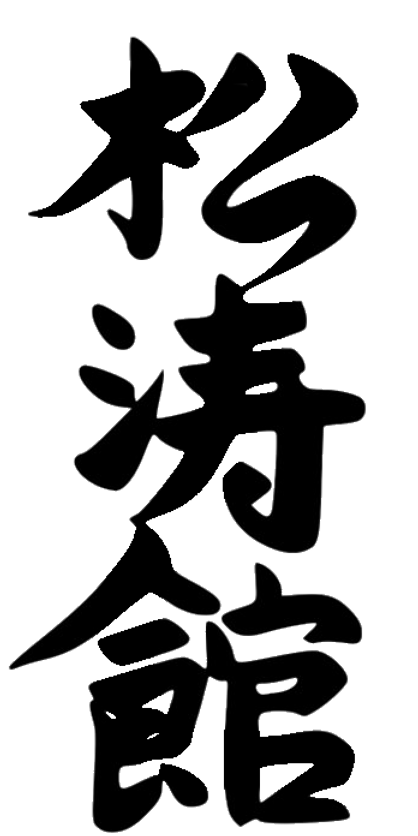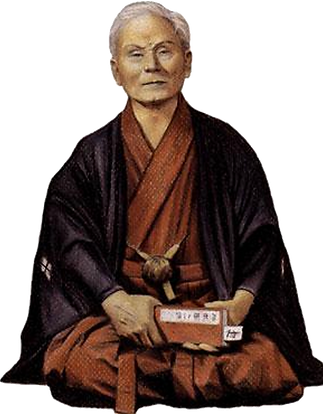


Gichin Funakoshi and the Birth of Shotokan
In 1922, Gichin Funakoshi, a dedicated Okinawan karate instructor, was invited to demonstrate his art at Japan’s first National Athletic Exhibition in Tokyo. His demonstration impressed many, including Judo founder Jigoro Kano, and led to the introduction of karate to mainland Japan.
Funakoshi remained in Tokyo to teach, establishing karate clubs at prestigious universities such as Keio, Waseda, and Takushoku. He emphasized karate not only as a method of self-defense but also as a path to personal development, embodying the philosophy of "Karate-dō", or "The Way of Karate."
In 1936, with the growing popularity of his teachings, his students built the first dedicated karate dojo in Tokyo, which they named Shōtōkan ("Shōto’s Hall"), after Funakoshi’s pen name "Shōto" (meaning "waving pines"). The dojo name soon became synonymous with his unique approach to karate.
Post-War Growth and the Japan Karate Association (JKA)
During World War II, the original Shotokan dojo was destroyed, and Funakoshi faced numerous hardships. However, his students persevered, and in 1949, they established the Japan Karate Association (JKA), with Funakoshi as its honorary chief instructor. Under the leadership of Masatoshi Nakayama, the JKA formalized training methods, introduced a structured instructor program, and promoted Shotokan Karate worldwide.
In 1957, the first All-Japan Karate Championship was held, marking the rise of competitive karate. Though Funakoshi opposed sport karate, the tournament structure helped spread the art globally. That same year, at the age of 88, Funakoshi passed away, leaving behind a profound legacy.
International Expansion
From the 1950s onward, Shotokan instructors traveled the world, establishing dojos and introducing the art to new generations. Prominent figures like Hidetaka Nishiyama, Hirokazu Kanazawa, Keinosuke Enoeda, and Teruyuki Okazaki played instrumental roles in spreading Shotokan across North and South America, Europe, Africa, and beyond.
Organizations such as the International Shotokan Karate Federation (ISKF), Shotokan Karate International Federation (SKIF), and Japan Karate Association (JKA) emerged, each contributing to the global development of the art. Shotokan Karate became the most widely practiced style, influencing other martial arts, including Taekwondo and various hybrid karate systems.
Shotokan in Modern Martial Arts
Shotokan’s structured approach, powerful techniques, and deep stances have made it a cornerstone of competitive karate. The World Karate Federation (WKF) recognizes Shotokan kata in international tournaments, and its practitioners have consistently excelled in global competitions.
Karate’s inclusion in the Tokyo 2020 Olympics marked a milestone for the martial art, with Shotokan-trained athletes competing at the highest level. Today, millions of practitioners worldwide continue to train in Shotokan, preserving Funakoshi’s legacy and embodying the philosophy of karate as a lifelong journey of self-improvement.
Timeline of Key Events
-
1868 – Birth of Gichin Funakoshi in Okinawa.
-
1922 – Funakoshi introduces karate to Japan at the National Athletic Exhibition.
-
1924 – The first university karate club is established at Keio University.
-
1936 – The first Shotokan dojo is founded in Tokyo.
-
1949 – The Japan Karate Association (JKA) is formed.
-
1957 – First All-Japan Karate Championship is held; Funakoshi passes away.
-
1960s-1980s – Shotokan expands globally, with instructors establishing dojos worldwide.
-
1970 – First World Karate Championships held in Tokyo.
-
1992 – World Karate Federation (WKF) becomes the official governing body for sport karate.
-
2020 – Karate debuts in the Tokyo Olympic Games.
-
Present Day – Shotokan remains one of the most widely practiced martial arts globally.
Through its rich history, Shotokan Karate has remained true to the principles set forth by Gichin Funakoshi: "The ultimate aim of karate lies not in victory or defeat, but in the perfection of character."
The History of Shotokan Karate
Origins and Early Development
Shotokan Karate traces its roots to the Ryūkyū Kingdom (modern-day Okinawa), where it evolved from indigenous fighting techniques influenced by Chinese martial arts. These early forms of combat were collectively known as Tōde ("Chinese Hand"). Over time, Okinawan masters integrated elements from various martial traditions, leading to the development of structured systems like Shōrin-ryū and Shōreī-ryū.
By the late 19th and early 20th centuries, legendary masters such as Ankō Itosu helped refine and introduce karate into Okinawan school curriculums, creating simplified training forms that laid the foundation for modern karate.
.png)